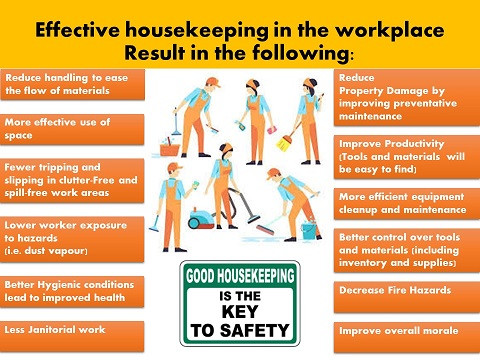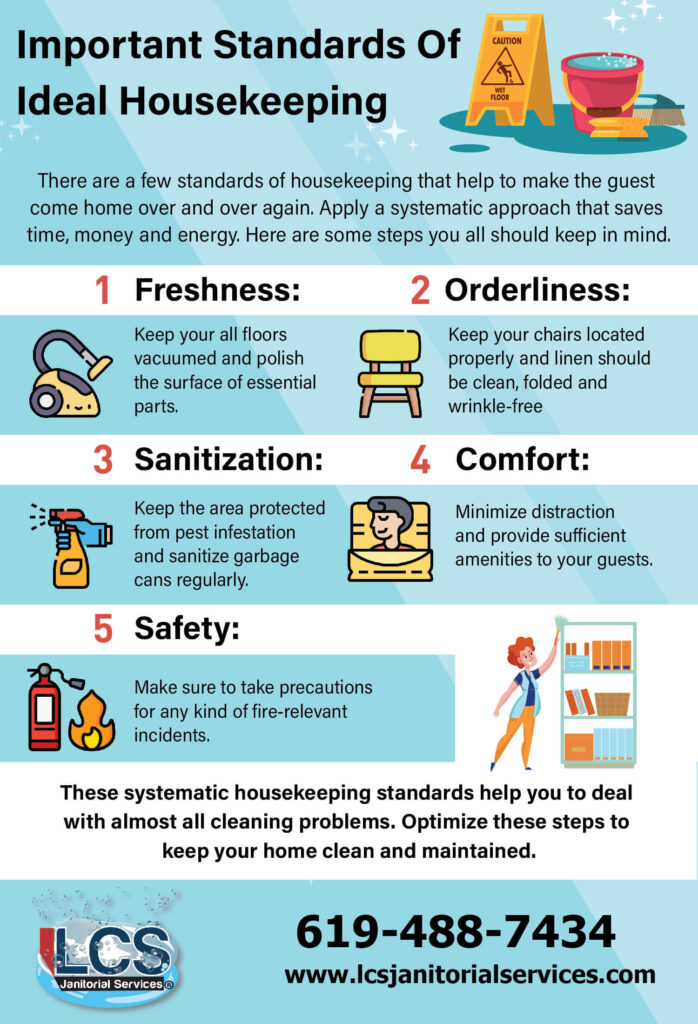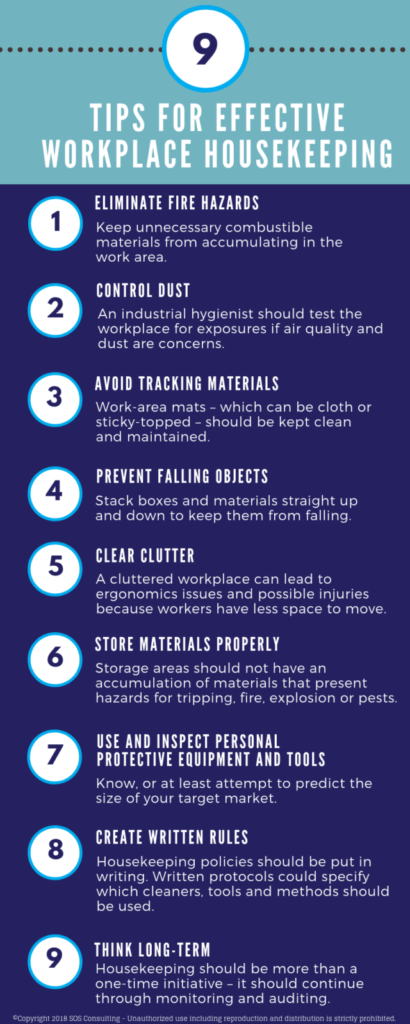Ah, housekeeping – the never-ending battle against dust bunnies, clutter, and mysterious stains. We’ve all been there, pushing around a mop or frantically searching for that one missing sock. But have you ever wondered what makes a housekeeping rule truly good? Is it the ability to banish all clutter with a single flick of the wrist? Or perhaps it’s the magical power of transforming a chaotic space into a pristine sanctuary? Join us on a hilarious journey as we uncover the secrets to a good housekeeping rule, or at least try not to trip over the vacuum cord in the process!

This image is property of avirtuouswoman.org.
Definition of Good Housekeeping Rule
Importance of Good Housekeeping
We all know that keeping our living spaces neat and organized is crucial for a stress-free and efficient life. But have you ever stopped to think about the significance of good housekeeping in the workplace? Well, my friends, let me enlighten you. A good housekeeping rule in the workplace refers to maintaining a safe, clean, and organized environment to ensure the well-being of employees and promote productivity. It encompasses a range of practices, from cleanliness and tidiness to waste management and compliance with regulations.
Benefits of Good Housekeeping
Now that we understand what a good housekeeping rule entails, let’s dive into its benefits. Trust me, there are plenty! First and foremost, maintaining a safe and clean environment is essential for preventing workplace hazards. By identifying and addressing potential risks, we can keep accidents and injuries at bay. Additionally, a well-kept workplace promotes efficiency and productivity. When our surroundings are organized, clutter-free, and distractions are minimized, we can focus better and get things done effectively. Moreover, adhering to regulations and standards not only keeps the authorities happy but also ensures the health and well-being of employees. Furthermore, good housekeeping rules have the power to enhance workplace morale and culture. When employees feel responsible and take ownership of their workspace, a positive atmosphere flourishes, fostering teamwork and cooperation. Last but certainly not least, embracing good housekeeping practices contributes to sustaining environmental conservation. By conserving resources, reducing waste and pollution, and implementing eco-friendly practices, we can do our part in creating a greener and more sustainable world.
Examples of Good Housekeeping Rules
Before we delve deeper into the various aspects of good housekeeping, let’s explore some practical examples of these rules. Some common good housekeeping practices include keeping walkways and fire exits clear, regularly cleaning and inspecting equipment, properly labeling hazardous substances, implementing proper waste management protocols, and maintaining a clean and organized workspace. Remember, a little effort goes a long way in creating a safe, productive, and eco-friendly workplace.
Creating a Safe and Clean Environment
Maintaining Clean and Organized Workspaces
Ah, the joy of a spotless and well-organized workspace! Not only does it make our hearts happy, but it also contributes to a safe and efficient working environment. Good housekeeping starts right at our own desks and workstations. Let’s make a pact to keep our desks tidy, decluttered, and free from unnecessary items. Keeping the floors clean and free from obstructions is equally important. Regularly sweep or vacuum the area to remove dust, debris, and undesirable crumbs that might turn your workspace into a feast for pests. Oh, and don’t forget – a clean desk is a happy desk!
Proper Waste Management
Now, let’s move on to waste management. No, we’re not talking about interpersonal office politics here, my friends. We’re talking about actual waste – those pesky leftovers, used materials, and empty coffee cups. Implementing proper waste management practices is crucial in maintaining a clean and safe workplace. This involves providing clearly labeled waste bins for different types of waste such as recyclables, general waste, and hazardous materials. Make sure these bins are easily accessible and regularly emptied to prevent unpleasant odors or unsightly overflowing bins.
Regular Cleaning and Inspection
Just like how we enjoy spring cleaning in our homes, regular cleaning and inspection are essential in the workplace too. By establishing a routine for cleaning and inspection, we can identify potential hazards and address them promptly. This includes cleaning and disinfecting shared spaces such as bathrooms and kitchens, ensuring proper ventilation, checking and maintaining equipment, and monitoring the condition of safety devices such as fire extinguishers and sprinkler systems. Remember, cleanliness is not only next to godliness but also key to a safe and healthy work environment.
Preventing Workplace Hazards
Identifying and Addressing Potential Hazards
Picture this: you’re innocently typing away at your computer when suddenly you stumble upon a loose wire snaking across the floor. Yikes! That’s a potential trip hazard right there. Identifying and addressing potential hazards is an important aspect of good housekeeping. Conduct regular inspections to spot unsafe conditions such as slippery surfaces, exposed wires, blocked emergency exits, or improperly stored chemicals. Once identified, take immediate action to rectify the situation and prevent any accidents or injuries from occurring.
Implementing Safety Measures
Prevention is always better than cure, folks. When it comes to workplace safety, implementing safety measures is the name of the game. This could include installing safety barriers, guardrails, or handrails where needed, providing personal protective equipment such as gloves or hard hats, and ensuring all employees are trained on proper safety protocols. By taking proactive measures, we can minimize risks and create a secure working environment for everyone.
Training and Education
Now, my dear colleagues, let’s talk about training and education. Knowledge is power, especially when it comes to workplace safety. It’s essential to provide proper training and education to all employees on good housekeeping practices and safety protocols. This includes familiarizing them with emergency procedures, teaching correct lifting techniques to prevent back injuries, and raising awareness about potential hazards and how to avoid them. The more informed and educated our workforce is, the better equipped they are to maintain a safe and hazard-free workplace.
Promoting Efficiency and Productivity
Streamlining Operations
In every workplace, efficiency and productivity are like two peas in a pod – they go hand in hand. To boost productivity, it’s crucial to streamline operations and eliminate any unnecessary steps or processes that hinder progress. Analyze workflows and identify areas that can be simplified or automated. By doing so, we not only save time and effort but also create a smoother and more efficient working environment. So, my friends, let’s bid adieu to those complex and convoluted processes and welcome simplicity and efficiency with open arms.
Optimizing Workflow
Speaking of efficiency, optimizing workflow is another key ingredient in the recipe for success. This involves organizing tasks and assignments in a logical sequence, ensuring that resources are readily available when needed, and promoting effective communication and collaboration between team members. By optimizing workflow, we can avoid bottlenecks and delays, allowing work to flow seamlessly and enhancing overall productivity. Remember, a well-oiled machine is a highly productive one!
Eliminating Clutter and Distractions
Ah, the notorious clutter and distractions that sneak their way into our workspaces. From a stack of papers teetering on the edge of our desks to the irresistible lure of social media, these little devils can wreak havoc on our productivity. It’s time to take a stand and banish them from our lives! By eliminating clutter and minimizing distractions, we can create a conducive work environment that allows us to focus and concentrate on the task at hand. So, my dear colleagues, let’s declutter, switch off those notifications, and reclaim our productivity!

This image is property of www.makrosafe.co.za.
Complying with Regulations and Standards
OSHA Regulations
Now it’s time to tackle the bureaucratic side of things. Occupational Safety and Health Administration (OSHA) regulations exist to ensure the safety and well-being of employees in the workplace. Familiarizing ourselves with these regulations and complying with them is crucial in maintaining a safe working environment. OSHA covers a wide range of areas, including hazard communication, electrical safety, personal protective equipment, and machinery guarding, among others. By adhering to these regulations, we not only avoid penalties but also prioritize the health and safety of our valued employees.
ISO Standards
In addition to OSHA regulations, international organizations such as the International Organization for Standardization (ISO) have developed standards that guide businesses in various aspects, including environmental management, quality management, and occupational health and safety. ISO standards provide a framework for organizations to create and maintain effective systems that ensure compliance and continuous improvement. By embracing these standards, we demonstrate our commitment to excellence and the well-being of our employees.
Industry-Specific Guidelines
Every industry has its own unique set of challenges and hazards. That’s why industry-specific guidelines are developed to address these specific needs. Whether you’re in construction, healthcare, manufacturing, or any other industry, it’s essential to be aware of and abide by the guidelines set forth. By doing so, we can tailor our approach to good housekeeping specifically to our industry, ensuring the utmost safety and compliance.
Ensuring Employee Health and Well-being
Reducing the Risk of Accidents and Injuries
Accidents and injuries in the workplace not only disrupt operations but also have a profound impact on the health and well-being of employees. That’s why reducing the risk of such incidents should be a top priority. Good housekeeping plays a crucial role in accident prevention. By keeping walkways clear, promptly cleaning up spills, ensuring proper lighting, and providing training on safe work practices, we can significantly reduce the likelihood of accidents and injuries. Remember, a safe employee is a happy employee!
Preventing Exposure to Hazardous Substances
In some work environments, exposure to hazardous substances is an unfortunate reality. Whether it’s chemicals, biological agents, or harmful fumes, it’s crucial to take measures to prevent exposure and protect the health of employees. Implementing proper ventilation systems, providing personal protective equipment, and educating employees on the risks and precautions associated with hazardous substances are vital steps in preventing exposure. By doing so, we prioritize the well-being of our employees and create a safer work environment for all.
Promoting Mental and Physical Wellness
Employee health and well-being encompass more than just avoiding accidents and exposure to hazards. It also includes promoting mental and physical wellness. Creating a positive work environment, encouraging work-life balance, providing opportunities for professional growth and development, and offering wellness programs and resources are all ways in which organizations can demonstrate their commitment to employee well-being. Remember, happy and healthy employees are the backbone of a successful and thriving workplace.

This image is property of www.makrosafe.co.za.
Enhancing Workplace Morale and Culture
Fostering a Sense of Responsibility and Ownership
Ah, workplace morale and culture – the intangible factors that can make or break an organization. Fostering a sense of responsibility and ownership is key in creating a positive and engaging work environment. When employees feel like they have a stake in their workplace and take pride in their surroundings, they are more likely to embrace good housekeeping practices. Encourage employees to take ownership of their workspace, involve them in decision-making processes, and recognize and reward their contributions. By doing so, we build a strong foundation of teamwork, loyalty, and a shared sense of purpose.
Creating a Positive Work Environment
Have you ever stepped into a workplace and immediately sensed a positive energy in the air? That, my friends, is the magic of a positive work environment. A positive work environment fosters collaboration, communication, and creativity. It radiates enthusiasm, encouragement, and support. Establish open lines of communication, promote a culture of respect and appreciation, and provide opportunities for employees to contribute ideas and feedback. By creating a positive work environment, we elevate not only workplace morale but also overall job satisfaction.
Building Teamwork and Cooperation
Teamwork makes the dream work, as the saying goes. And it couldn’t be more true when it comes to good housekeeping. Building teamwork and cooperation is essential in maintaining a clean and organized workplace. Encourage employees to work together, share responsibilities, and support one another in keeping the workplace spick and span. Foster a culture of collaboration and teamwork, where everyone understands the importance of good housekeeping and takes pride in creating a safe and productive environment. Remember, we’re all in this together!
Sustaining Environmental Conservation
Conserving Resources
Environmental conservation is no longer a mere buzzword; it’s a necessity. Good housekeeping plays a vital role in sustainability efforts by encouraging resource conservation. Switching off lights when not in use, optimizing energy consumption, reducing water usage, and promoting recycling and reuse are just a few ways in which organizations can contribute to a greener future. By being conscious of our resource consumption and implementing sustainable practices, we take a step closer to preserving the earth for future generations.
Reducing Waste and Pollution
Waste not, want not. As the saying implies, reducing waste and pollution should be a priority for organizations aiming to embrace good housekeeping. Implementing waste reduction strategies such as proper recycling, composting, and waste segregation minimizes the environmental impact of our operations. Additionally, adopting eco-friendly practices in our day-to-day operations, such as using environmentally friendly cleaning products or opting for digital documentation instead of paper, further reduces waste and pollution. It’s time to bid farewell to the throwaway culture and embrace a cleaner and greener way of doing business.
Implementing Eco-friendly Practices
While waste reduction and resource conservation are essential components of environmental conservation, implementing eco-friendly practices goes beyond that. Embracing eco-friendly practices means being mindful of the entire lifecycle of our products or services, from sourcing to disposal. It involves using sustainable materials, promoting energy efficiency, and minimizing our carbon footprint. By incorporating eco-friendly practices into our organization’s DNA, we pave the way for a more sustainable future.

This image is property of lcsjanitorialservices.com.
Implementing Good Housekeeping Rules
Evaluating Current Practices
Now that we’ve covered the why and the what of good housekeeping, let’s focus on the how. Implementing good housekeeping rules begins with evaluating our current practices. Take the time to assess the cleanliness and safety of your workspace. Identify any areas or practices that need improvement or attention. Engage employees in this process by gathering their feedback and insights. After all, they are the ones who interact with the workspace daily and might provide valuable perspectives. Once you have a clear understanding of your current practices, it’s time to devise a plan.
Developing a Customized Plan
Every organization is unique, and one size doesn’t fit all when it comes to good housekeeping. Developing a customized plan tailored to your organization’s specific needs and challenges is paramount. Start by setting clear goals and objectives. Identify the key areas that require improvement and establish practical steps to achieve those goals. Assign responsibilities and hold individuals accountable for their part in the plan. Remember, a well-thought-out and customized plan lays the foundation for successful implementation.
Regular Monitoring and Evaluation
Implementing good housekeeping practices is not a one-time endeavor; it’s an ongoing commitment. Regular monitoring and evaluation are essential to ensure that the plan is being effectively implemented and delivering the desired results. Continuously assess the progress and effectiveness of your good housekeeping practices, gather feedback from employees, and make necessary adjustments as needed. By monitoring and evaluating your efforts, you can continuously improve your housekeeping practices and create a safer, cleaner, and more productive workplace.
Common Challenges and Solutions
Resistance to Change
Ah, change – the eternal companion of progress. However, change can often be met with resistance. When introducing new good housekeeping rules, some employees may be hesitant to embrace these changes. They might find it difficult to break old habits or perceive the changes as unnecessary or burdensome. To overcome this resistance, it’s important to communicate the benefits of the changes clearly and involve employees in the decision-making process. Provide training and support to help them adapt to the changes, and recognize and reward their efforts. By addressing resistance to change head-on, we can smooth the transition and foster acceptance and enthusiasm for the new housekeeping rules.
Lack of Resources
Implementing good housekeeping rules can sometimes be challenging due to limited resources, whether it be budget constraints, staffing shortages, or equipment limitations. However, resource constraints should not be seen as insurmountable obstacles. Instead, it’s an opportunity to get creative and find practical solutions. Make the most of the resources available by prioritizing tasks, leveraging technology to streamline processes, and seeking innovative ways to achieve your goals. Remember, where there’s a will, there’s a way!
Integration with Other Safety Programs
Good housekeeping is just one piece of the workplace safety puzzle. Integrating good housekeeping with other safety programs and initiatives is crucial for a comprehensive approach to employee well-being. This can be achieved by aligning good housekeeping practices with existing safety programs, establishing clear communication channels between different departments, and encouraging cross-functional collaboration. By integrating good housekeeping into the broader safety framework, organizations can create a cohesive and holistic safety culture.
In conclusion, my fellow enthusiasts of good housekeeping, implementing and embracing good housekeeping rules in the workplace is no laughing matter – it’s a serious business. But who says serious can’t be funny? By creating a safe and clean environment, preventing workplace hazards, promoting efficiency and productivity, complying with regulations, ensuring employee health and well-being, enhancing workplace morale and culture, sustaining environmental conservation, implementing good housekeeping rules effectively, and tackling common challenges head-on, we can build a harmonious and successful workplace. So let’s roll up our sleeves, grab that broom, and embark on this housekeeping adventure together. Remember, a tidy workplace is a happy workplace!

This image is property of www.synergyinsurance.com.

